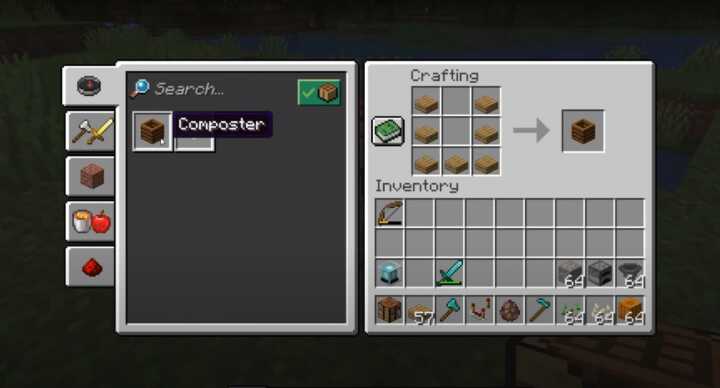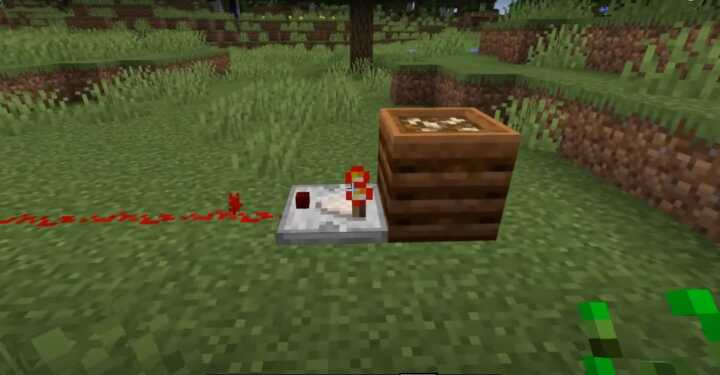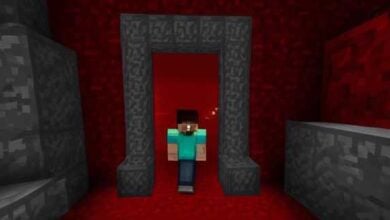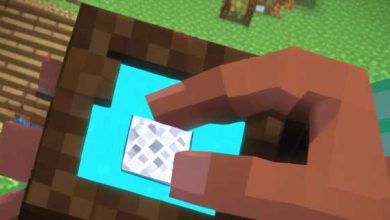How To Make A Composter In Minecraft for Eco-Friendly Farming

Minecraft – the greatest, most beloved sandbox game that has won millions of hearts offers a great and highly immersive world where one can build, explore, or even endure. Composting can be considered a central feature of sustainability and one of the most important elements in playing the game. In this guide, let’s examine how to make a composter in Minecraft and unlock its power.
Understanding the Value of Composting in Minecraft.
Before we move on to develop the intricacies of building a composter, it is essential to understand why creating one in the Minecraft gaming world offers much value. Composting is, therefore, not only a legitimate approach to discard organic remnants like crops and plants but also supplies benefit in return – bo ne meal.
Bo ne meal is an all-purpose material that helps crops to grow faster, which makes it priceless for those players in the game who would like to lend a hand from builders and farmers. Players can establish a composter to effectively recycle organic waste, turning it into an effective growth booster for their virtual farm ventures.
Step-by-step Guide to Building a Composter

In Minecraft making a composter is simple and can be done by finding certain materials that are readily available in the game. Follow these steps to craft your very own composter:
1. Gather Materials:
- Wooden Slabs: Acquire three pieces of wood any kind will do.
- Wooden Fences: Collect four wooden fences. There are no limitations as to the type of wood that can be used for this.
2. Access the Crafting Table:
- First, open the crafting table interface with a 3x everything grid.
3. Arrange the Materials:
- There are three wooden slabs to be placed on the bottom row of the crafting grid.
- Arrange the four wooden fences in the remaining spaces between and on both sides of rectangular grid walls.
4. Retrieve the Composter:
- If the materials are placed correctly, they will craft a composter.
- Make sure you drag the composter into your inventory.
Congratulations! You’ve successfully created a composter in Minecraft. So, let’s learn now how to make proper use of this eco-friendly block.
Usage of the Composter for Sustainable Orchid Cultivating.
Well, you have your composter now and it is to be used. The main role of the composter is turning organic matter into bo ne meal. Here’s a step-by-step guide on how to use the composter for optimal results:
1. Acquire Organic Materials:
- Collect any organic materials that you feel might be good for composting. These can range from crops, seeds, and other plant-based materials.
2. Access the Composter:
- Right-click (or left trigger, depending on the platform) the composter to open its interface.
3. Deposit Organic Items:
- Put organic materials that need composting into slots of an integrated rig. Values differ for composting each item, and some items subsequently can take more space or do the opposite when it comes to saving.
4. Monitor the Composting Progress:
- When you dump things in the car, they will see that green progress bar rising. This shows the level of composting that is going inside.
5. Collect Bo ne Meal:
- After the composting process is done, then disease-free bo ne meal will be obtained from the composter. It is as simple as right-clicking ( or left trigger) on the composter to collect a bo ne meal.
By performing the process in a step-by-step manner you will be able to recycle organic waste produce and utilize bo ne meal for your farming and gardening purposes on Minecraft.
Advanced Composting Tips: Maximizing Efficiency

For those looking to take their composting game to the next level, here are some advanced tips to maximize efficiency:
1. Choose High-Value Items:
- Some items are more beneficial in the composting process. Valuable items that are high in value for composting should be taken first for prospects of higher efficiency.
2. Automate the Process:
- For instance, one could easily set up farms where the crops are fed directly to composters. This prevents unnecessary efforts and facilitates smooth composting processes.
3. Use Compost for Crop Growth:
- Use the gathered bo ne meal on crops to boost growth. This will be particularly useful in larger farming projects.
4. Combine Composters:
- Connecting several composters will allow for the establishment of a competent network that produces quality and nutritious manure. This can notably enhance the total composting capacity.
Conclusion: A Greener Minecraft Experience
It is the intricate, ever-expanding world of Minecraft that necessitates sustainability and resourcefulness to a well-played, enjoyable gaming experience. Incorporating composting in your game or puzzle allows you to donate towards making the virtual world even greener, ultimately giving credit back into your collection of resources supporting future adventures.
But constructing a composter and learning how to work with it unlocks new horizons for successful farming, landscaping, etc., and we accomplish better resource management. So, as you continue in your Minecraft adventure it will always be good to remember that the incredible ability to develop a thriving and self-supporting natural paradise is quite literally at forefinger only – or more correctly stated; still lay within those important composter bins. Happy composting!



